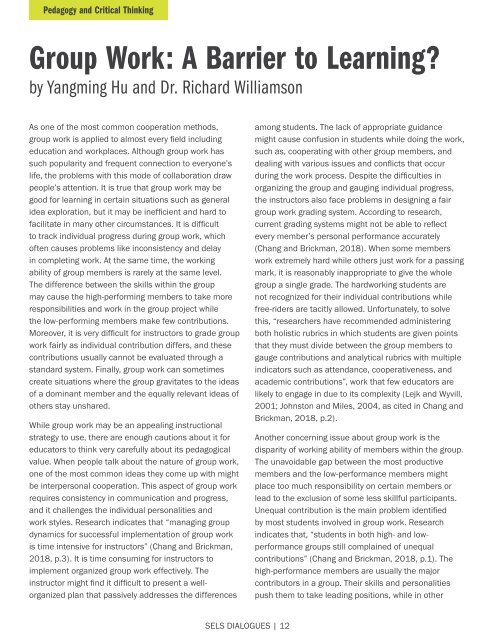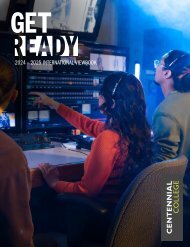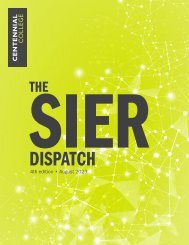SELS Dialogues Journal Volume 3 Issue 1
A diverse collection of articles, each offering a unique perspective and contributing to the ever-expanding landscape of knowledge and creativity.
A diverse collection of articles, each offering a unique perspective and contributing to the ever-expanding landscape of knowledge and creativity.
Create successful ePaper yourself
Turn your PDF publications into a flip-book with our unique Google optimized e-Paper software.
Pedagogy and Critical Thinking<br />
Group Work: A Barrier to Learning?<br />
by Yangming Hu and Dr. Richard Williamson<br />
As one of the most common cooperation methods,<br />
group work is applied to almost every field including<br />
education and workplaces. Although group work has<br />
such popularity and frequent connection to everyone’s<br />
life, the problems with this mode of collaboration draw<br />
people’s attention. It is true that group work may be<br />
good for learning in certain situations such as general<br />
idea exploration, but it may be inefficient and hard to<br />
facilitate in many other circumstances. It is difficult<br />
to track individual progress during group work, which<br />
often causes problems like inconsistency and delay<br />
in completing work. At the same time, the working<br />
ability of group members is rarely at the same level.<br />
The difference between the skills within the group<br />
may cause the high-performing members to take more<br />
responsibilities and work in the group project while<br />
the low-performing members make few contributions.<br />
Moreover, it is very difficult for instructors to grade group<br />
work fairly as individual contribution differs, and these<br />
contributions usually cannot be evaluated through a<br />
standard system. Finally, group work can sometimes<br />
create situations where the group gravitates to the ideas<br />
of a dominant member and the equally relevant ideas of<br />
others stay unshared.<br />
While group work may be an appealing instructional<br />
strategy to use, there are enough cautions about it for<br />
educators to think very carefully about its pedagogical<br />
value. When people talk about the nature of group work,<br />
one of the most common ideas they come up with might<br />
be interpersonal cooperation. This aspect of group work<br />
requires consistency in communication and progress,<br />
and it challenges the individual personalities and<br />
work styles. Research indicates that “managing group<br />
dynamics for successful implementation of group work<br />
is time intensive for instructors” (Chang and Brickman,<br />
2018, p.3). It is time consuming for instructors to<br />
implement organized group work effectively. The<br />
instructor might find it difficult to present a wellorganized<br />
plan that passively addresses the differences<br />
among students. The lack of appropriate guidance<br />
might cause confusion in students while doing the work,<br />
such as, cooperating with other group members, and<br />
dealing with various issues and conflicts that occur<br />
during the work process. Despite the difficulties in<br />
organizing the group and gauging individual progress,<br />
the instructors also face problems in designing a fair<br />
group work grading system. According to research,<br />
current grading systems might not be able to reflect<br />
every member’s personal performance accurately<br />
(Chang and Brickman, 2018). When some members<br />
work extremely hard while others just work for a passing<br />
mark, it is reasonably inappropriate to give the whole<br />
group a single grade. The hardworking students are<br />
not recognized for their individual contributions while<br />
free-riders are tacitly allowed. Unfortunately, to solve<br />
this, “researchers have recommended administering<br />
both holistic rubrics in which students are given points<br />
that they must divide between the group members to<br />
gauge contributions and analytical rubrics with multiple<br />
indicators such as attendance, cooperativeness, and<br />
academic contributions”, work that few educators are<br />
likely to engage in due to its complexity (Lejk and Wyvill,<br />
2001; Johnston and Miles, 2004, as cited in Chang and<br />
Brickman, 2018, p.2).<br />
Another concerning issue about group work is the<br />
disparity of working ability of members within the group.<br />
The unavoidable gap between the most productive<br />
members and the low-performance members might<br />
place too much responsibility on certain members or<br />
lead to the exclusion of some less skillful participants.<br />
Unequal contribution is the main problem identified<br />
by most students involved in group work. Research<br />
indicates that, “students in both high- and lowperformance<br />
groups still complained of unequal<br />
contributions” (Chang and Brickman, 2018, p.1). The<br />
high-performance members are usually the major<br />
contributors in a group. Their skills and personalities<br />
push them to take leading positions, while in other<br />
<strong>SELS</strong> DIALOGUES | 12















